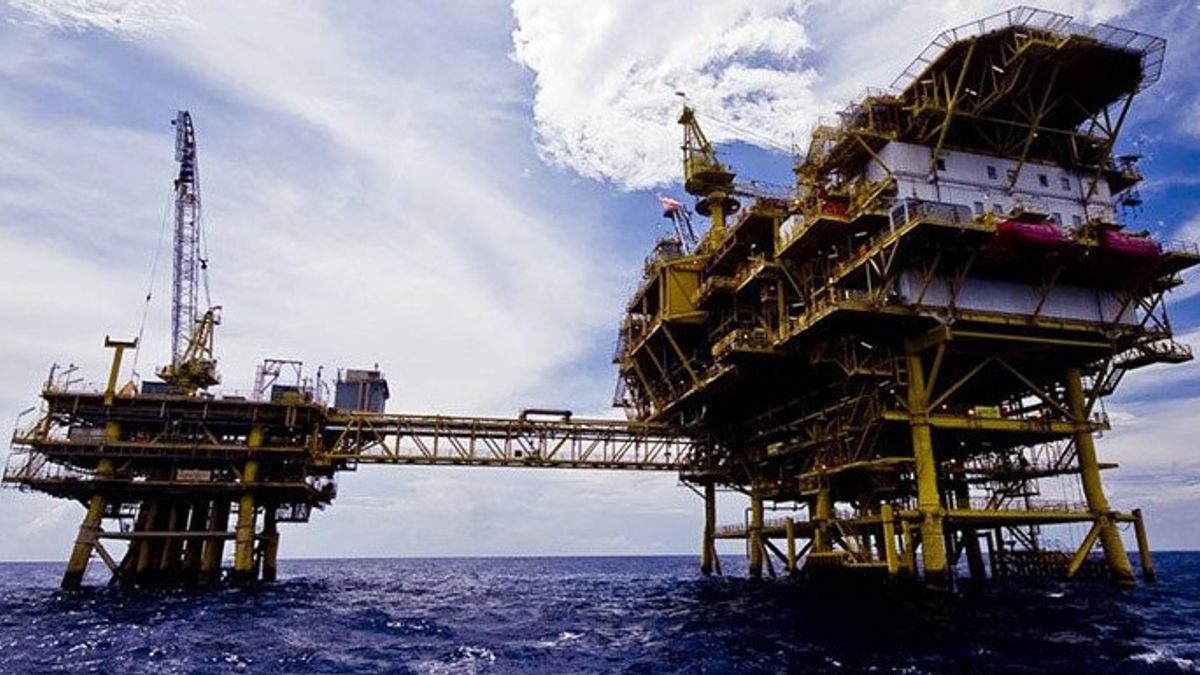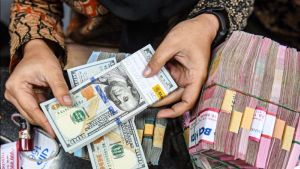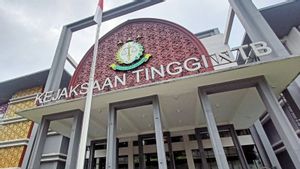JAKARTA - Various national and international energy institutions in June and July 2022 submitted forecasts for world energy in 2023. SKK Migas estimates that oil prices in 2023 will still be at the level of 100 US dollars per barrel.
The high price is still influenced by the conflict between Russia and Ukraine which has not subsided. In addition, the improvement in the COVID-19 pandemic has increased the demand for world oil.
The International Energy Agency says world oil demand will rise by more than 2 percent to a record high of 101.6 million barrels per day (bpd) in 2023. The same forecast was released by OPEC+ in June. They stated that global oil supply would increase at the level of 100-102 million barrels per day.
"Considering the forecasting of various credible institutions on the volume of production and world oil prices, it seems that we will experience a situation that is more or less the same as this year regarding world oil," said Chairman of the House Budget Agency, MH Said Abdullah, in his statement, quoted on Friday. August 12.
Even though in 2022, Said said, the state budget is facing a heavy burden of energy subsidies due to rising world oil prices. There is an additional allocation of energy subsidies of IDR 74.9 trillion from the initial ceiling of IDR 134 trillion (IDR 77.5 trillion LPG and fuel as well as electricity IDR 56.5 trillion), and an additional allocation of fuel and electricity compensation payments of IDR 275.0 trillion from the original IDR 18.5 trillion.
"The additional compensation is for fuel compensation of IDR 234.0 trillion and electricity compensation of IDR 41.0 trillion. In addition, the government must pay off the energy compensation costs for the insured in 2021 amounting to IDR 108.4 trillion, with details of IDR 83.8 trillion for fuel and IDR 24. 6 trillion for electricity," said Said.
Said further explained, in addition to the issue of oil prices next year, we estimate that they will remain high, the potential for the subsidy burden will increase if we look at the trend of fuel and electricity consumption which will increase in line with the continued improvement in the domestic economy.
"The price gap which is quite wide between Pertalite and Pertamax prices has the opportunity for greater Pertalite consumption migration, so that consumption needs for Pertalite will increase," he said.
Naturally, the trend of Pertalite consumption continues to rise. In 2017 the consumption of Pertalite was 14.5 million kiloliters, in 2018 it rose to 17.7 million kiloliters, and in 2019 it rose again to 19.4 million kiloliters.
In 2020 the consumption of pertalite fell due to the impact of the pandemic. Pertalite consumption in 2020 is 18.1 million kiloliters and in 2021 it will increase to 23 million kiloliters. This year the pertalite quota reaches 23 million kiloliters. Until June 2022, 14.2 million kiloliters have been consumed.
"Considering future forecasts and trends in our fuel consumption so far, the government should immediately make various policies to anticipate pressure on the APBN on the energy subsidy side in 2023," he explained.
Some of the mitigation measures that the government can take include:
1. Reform the energy subsidy policy as soon as possible. Changing energy subsidies from being commodity-based to being people-oriented.
TNP2K data shows that of the 50.2 households that received the LPG subsidy program, 32 percent of households with the lowest socioeconomic conditions only enjoyed 22 percent of the LPG subsidy, while 86 percent was enjoyed by the more well-off group. This happens because subsidized LPG cylinders are freely traded in the market together with non-subsidized LPG with a large price difference, so that the majority of households use subsidized LPG.
In fact, electricity subsidies are received by groups that are classified as economically capable. Ironically, only 26 percent of the poor and vulnerable groups enjoy electricity subsidies. This is because some rich households still use 900 VA electricity consumption.
If calculated in nominal terms, poor households only receive electricity subsidies of IDR 63,399/month while rich households receive an electricity subsidy of IDR 168,390/month by referring to the level of monthly electricity consumption of the 900 VA group.
We will experience the same thing with Pertalite along with the price gap that is quite far between Pertalite and Pertamax. The migration of pertamax consumers to pertalite will result in an increase in the pertalite subsidy burden.
Therefore, the government needs to change the energy subsidy target to focus on poor families, not commodities. Gradually shift the distribution mechanism for subsidized LPG from open sales to semi-closed sales and integrate the provision of LPG subsidies through integrated data from the Ministry of Social Affairs DTSK, as well as the recipients of electricity and fuel subsidies, all recipients of electricity and fuel subsidies have integrated data through the Ministry of Social's DTSK.
2. We have not raised the price of subsidized fuel, LPG and electricity for a long time. The government needs to slowly increase the price of subsidized fuel, LPG, and electricity while still taking into account macroeconomic conditions, as well as the purchasing power of the people, especially the lower middle class.

However, when energy prices are low, the government also reduces the prices of fuel, LPG, and electricity. We have implemented a policy like this several years ago, and it is still very relevant to be used as a scheme to balance the fiscal strength of our APBN.
3. The government needs to renegotiate the crude oil purchase contract to get a more economical price. With Russia's oil position still being affected by the ban on sales in Europe and the United States, Indonesia is actually very open to getting oil supplies from Russia, especially Pertamina has received oil supplies from Russia.
Our foreign policy is free and active, we should prioritize the national interest, especially in getting imported oil prices at a more economical price.
4. Encouraging increased investment in the upstream oil and gas sector so that our oil output does not rely on old wells, including consistently implementing the Refinery Development Master Plan target, as well as increasing crude oil processing capacity to 2 million barrels per day.
We need to be disciplined about this target considering the future trend as the energy trajectory formulated by the Ministry of Energy and Mineral Resources shows that the trend of imports of crude oil, fuel, LPG and electricity will continue to increase in the future.
5. To reduce the burden of dependence on oil which is so large, the government needs to progressively implement energy conversion policies. The realization of investment in the new, renewable energy and energy conservation (EBTKE) sector throughout 2021 only reached 1.51 billion US dollars or 74 percent of the target set at 2.04 billion US dollars.
The new renewable energy mix (EBT) reached 11.5 percent or equivalent to 168.7 million barrels of oil equivalent (MBOE) as of the end of 2021. This mix figure increased slightly when compared to the position of the NRE mix at the end of 2020 which was 11.2 percent or equivalent to 163.2 MBOE.
In detail, the national energy mix as of the end of 2021 consists of coal with a share of 38.0 percent, petroleum 31.2 percent, natural gas 19.3 percent, and NRE 11.5 percent. If we refer to the General National Energy Plan (RUEN) the EBT mix is targeted to reach 14.5 percent or equivalent to 319.3 MBOE by the end of 2021, but our achievement is only 11.5 percent. The DPR encourages the government to strive for the RUEN target to be met next year, so that the portion of NRE is getting bigger.
6. To reduce the economic burden due to the high world commodity prices next year, the government needs to continue to strengthen social protection programs. We hope that this program will serve as a cushion for poor families to face the potential increase in various goods and services next year.
The English, Chinese, Japanese, Arabic, and French versions are automatically generated by the AI. So there may still be inaccuracies in translating, please always see Indonesian as our main language. (system supported by DigitalSiber.id)













